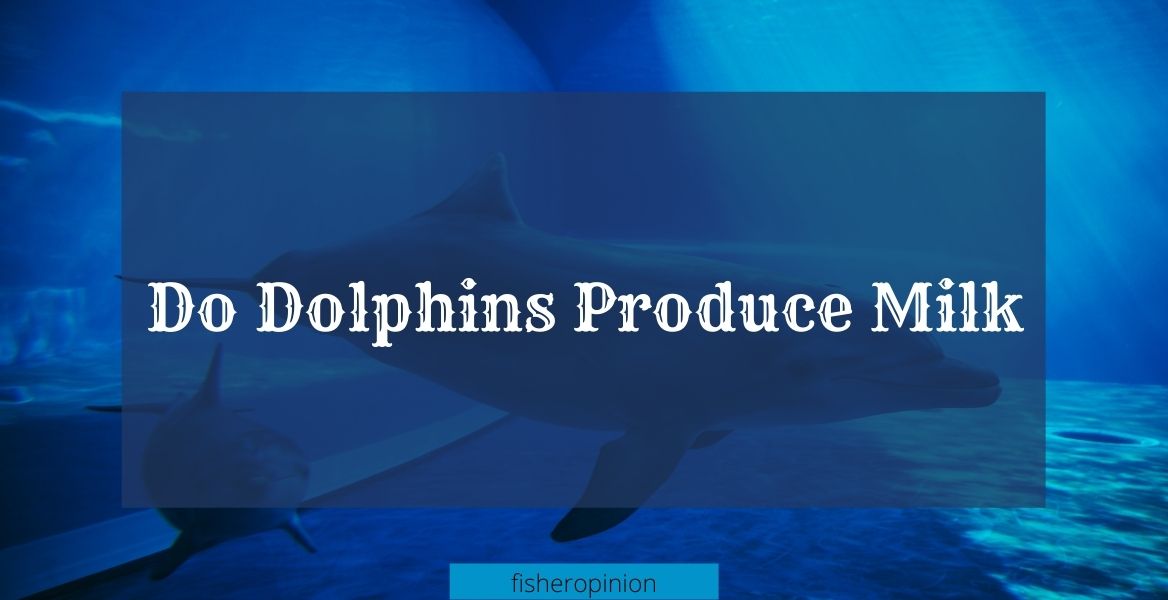Dolphins are mammals and live in water. There are over 40 species of dolphins. They can survive in both salty and freshwater. Dolphins are extremely intelligent, friendly, and caring. Dolphins give birth to live young ones and nurse their young. You might then ask yourself, do dolphins produce milk? This article will give you more insight into this.
Do dolphins have milk?
The simple answer to this question is yes. Dolphins have milk. Like other mammals, they produce their milk in their mammary glands. Dolphin’s calves need milk to grow. Dolphins’ milk is fatty, rich in proteins, and low in lactose. These ingredients make the milk quite thick. This helps the calves to grow fast.
A dolphin’s milk is important during the calf’s younger days because the calves get all their nutrients from the milk. A baby dolphin drinks milk every 20 minutes, 24 hours a day. This means that a dolphin produces a lot of milk to feed its calf.
Do dolphins breastfeed?
Yes! Dolphins do breastfeed their calves. Dolphins have mammary glands, which store the milk. A dolphin can lactate and gestate at the same time. A pregnant dolphin can breastfeed its calf. The fat available in a dolphin’s milk depends on the calf’s mass. The higher the amount of fat the bigger the calf.
A dolphin’s nipples are located within its mammary slits, near the stomach. Anytime the dolphin’s calf wants to breastfeed, it places its beak into the slit and latches on the nipples. Dolphin calves breastfeed fast because, at some point, the dolphin and the calf will need to go to the water’s surface for air.
What color is dolphin milk?
Dolphins produce milk from their mammary glands. This milk is thick because it is highly concentrated with fat. Research shows that dolphin milk is white in appearance and has a yellow tinge and a creamy consistency.
Dolphin’s milk has a fishy odor. It is not sweet and has an oily taste due to the fat in it. Dolphin’s milk is 45 percent fat. The fat helps the calf to grow and nourish.
How do dolphins feed their young?
When a dolphin gives birth to its calf, it has to breastfeed it. Dolphins have mammary glands with milk stored in them. A dolphin has two inverted nipples within its mammary slits. These are located near its stomach.
When the calf is ready to feed, they dive underneath the mother it places its beak into the slit and latches on the inverted nipple. The mother controls how much the dolphin calves feed. It squirts its milk from its mammary glands into the calf’s mouth.
Once this is done, the calf wraps its mouth around the nipples and rolls its tongue into the tube. Doing this ensures that the milk is taken directly to the calf’s mouth and none of it is lost and wasted in the water.
Dolphin’s milk is quite thick compared to other mammals’ milk. This enables the dolphin calf to drink as much milk as they can without any milk being lost to the water. Dolphin’s milk is also richer in nutrients and fattier.
Dolphins ensure their calves are well. When a calf is old enough, the mother dolphin trains it to hunt for food while still providing milk for the calf. The milk helps the calf to grow and gives it the right nutrients.
On many occasions, a dolphin will take some time before getting pregnant. This is to allow its calf to get the full attention, nutrients, and food it needs for it to grow and survive.
How long do Dolphins breastfeed?
As soon as dolphin calves are born, they need to breastfeed to survive, grow, and for nourishment. If they do not drink milk, their chances of survival are slim, and risk starving to death.
A newborn dolphin calf takes milk after every 20 minutes, every day. As dolphin calves grow older, their milk intake however reduces. A dolphin can breastfeed their young calves from birth up to 2 years. In some instances, a dolphin calf will nurse up to 6 years of age.
Breastfeeding helps the dolphin and its calf to create a strong bond, just like what happens in humans between a mother and her child. The bond is important during the development of the dolphin calf. The relationship between the dolphin and its calf is also crucial for the calf’s survival.
After the calf has grown and can consume solid food, the mother teaches it how to hunt for food. This food can include some small fish. The calf also continues to drink its mother’s milk for more nutrients and supplements.
The milk full of fat helps the baby dolphin. When a calf drinks the milk, it grows blubber. Blubber is a thick layer of fat under a dolphin’s skin. Since the calf spends its entire life in water, the blubber acts as an insulating layer against the cold water.
Do dolphins drink milk?
Yes! Dolphins do drink milk. When a dolphin calf is born, it drinks milk from its mother’s mammary glands through the nipples. The nipples are enclosed in the mammary slits. The nipples are not on the outside like in humans. This is to prevent wastage of milk and to maintain a streamlined body.
Dolphins drink milk while in water by rolling their tongues into straw-like shapes and latching to the mother’s nipples. This acts like a seal, which keeps sea salty water out, and milk into the calf’s mouth.
The milk dolphin calves drink is high in fat and nutrients and low in lactose. The fat helps them build fatty skin. The fatty skin keeps the calves warm in the water. The nutrients found in dolphin’s milk are essential for the calf’s growth.
When the young calves are drinking the milk, they bond with the mother and create a very strong relationship.
Where does dolphin milk come from?
Dolphin milk comes from the mammary glands where it is produced during gestation and lactation. A dolphin’s body will prepare the milk in its body before the calf is born. Once the calf is born, it will have access to the milk.
A calf uses the inverted nipples to drink the milk from its mother’s mammary glands. The mother voluntarily ejects the milk from the nipples to the calf’s mouth. It is done to control the amount of milk the calf receives.
Due to the high concentration of fat, the mother’s milk is very dense hence does not spill in the water while the calf is breastfeeding. The mother dolphin will continue to produce milk for the next six months up to two years or a bit more.
When a mother dolphin is lactating, it can get pregnant again and while gestating, a dolphin can still lactate its born calf. The food the mother eats will greatly contribute to the quality of milk it produces. For the mother to produce high-quality milk with a good supply, she needs to eat high-fat prey. As the calf grows, the milk supply from the mother reduces and the milk has less lactose. It encourages the calf to look for other food sources to sustain it for growth and nutrients in its body.
Can you drink dolphin milk?
It is not advisable to drink dolphin milk. The sea has been polluted by polychlorinated biphenyls. As dolphins eat the fish in the sea, the chances of them being contaminated are high. This chemical is toxic to both humans and sea creatures as well.
The polychlorinated biphenyls or PCBs as commonly known harm humans. It includes depressing the reproductive system, neurological system, and immune system. These effects are also in dolphins.
A dolphin’s milk is oily, lacks sweetness, and has a fishy odor. A human will likely be able to tolerate such in milk. It is also high in fat and low in lactose. Drinking dolphin’s milk might lead to humans being obese due to its fat concentration.
It is also not easy to get dolphin’s milk. A lot of time and effort is used to harvest dolphins’ milk. It is because of the inverted mammary glands and nipples that the dolphins have.
Dolphin milk is also not commercially available now. It will be hard for you to get hold of some dolphin milk to drink.
Warp Up
This article has shown the incredible world of dolphins and their breastfeeding habits. Dolphins do breastfeed after they give birth. It is through the inverted nipples located in the mammary glands. The dolphin’s milk is full of fat concentration hence very dense.
The milk is dense to avoid spillage in the water. The milk helps the calf with the nutrients that are essential for growth. Dolphins breastfeed their young for six months up to 2 years or even more. While weaning, dolphins still breastfeed their calves.
Dolphins are protective of their calves and will do anything to ensure they are safe. Breastfeeding in dolphins, just like in humans, is important because it creates a strong bond and relationship between the mother and calf.


